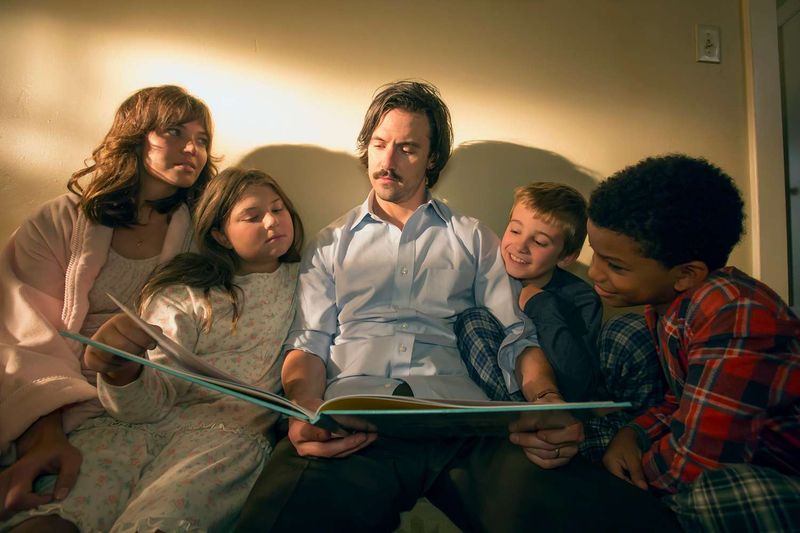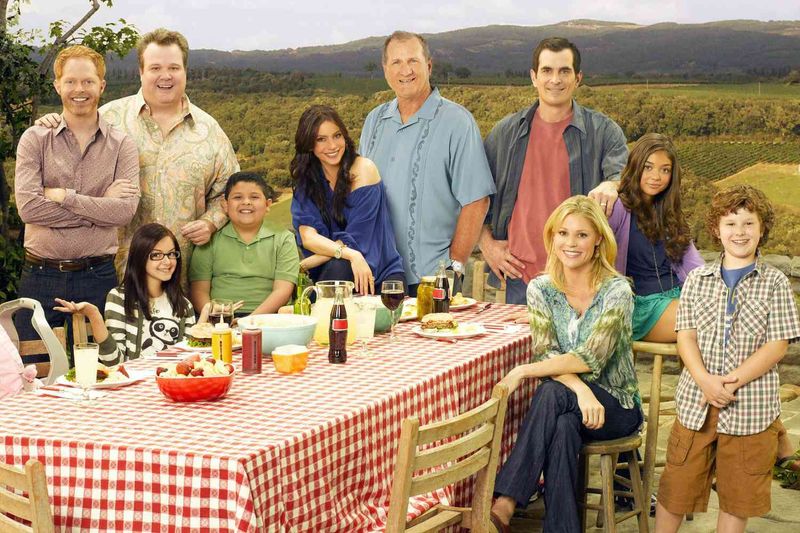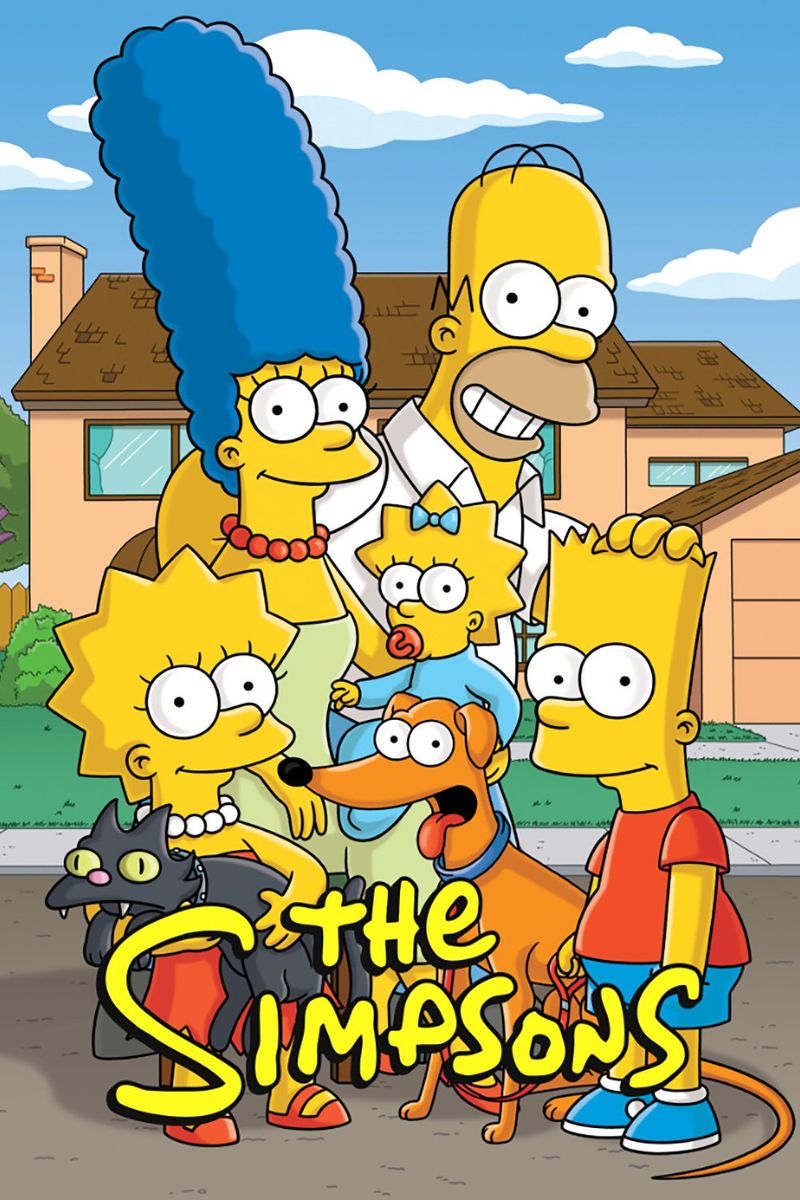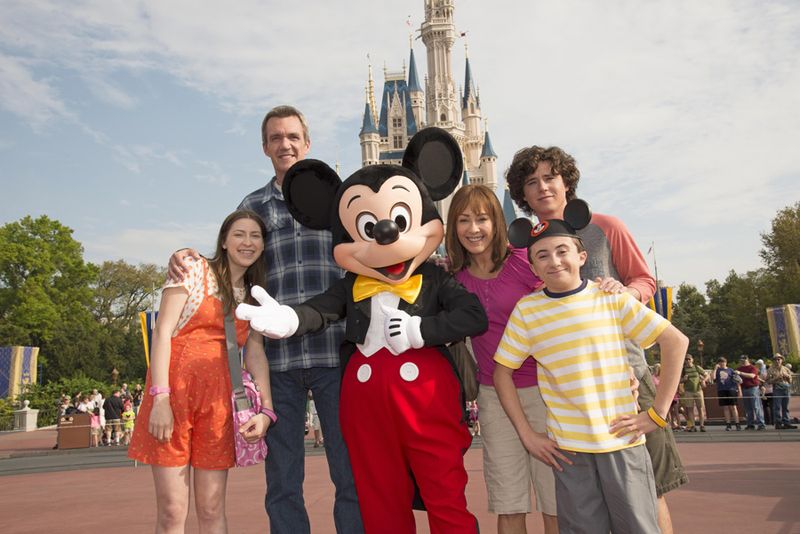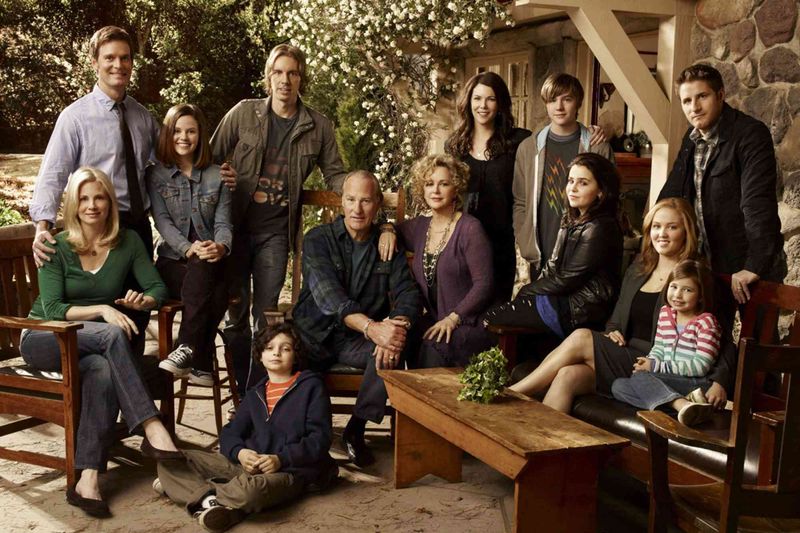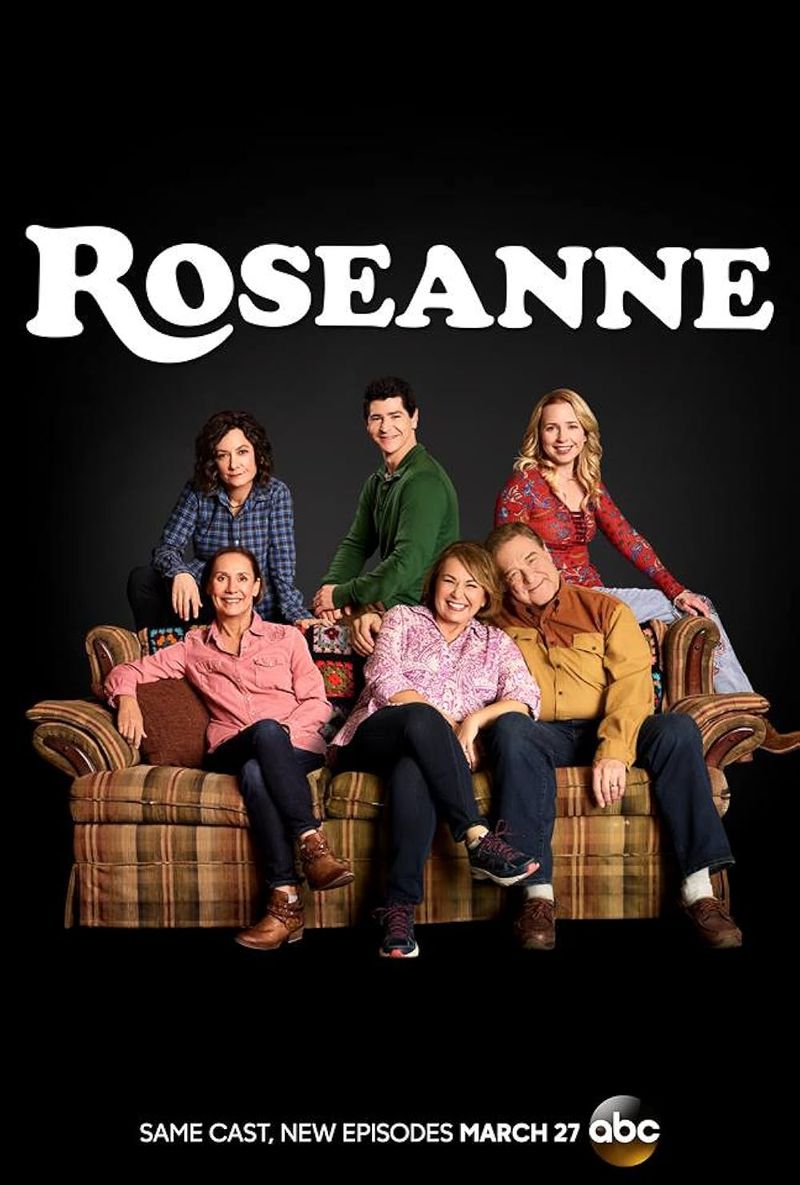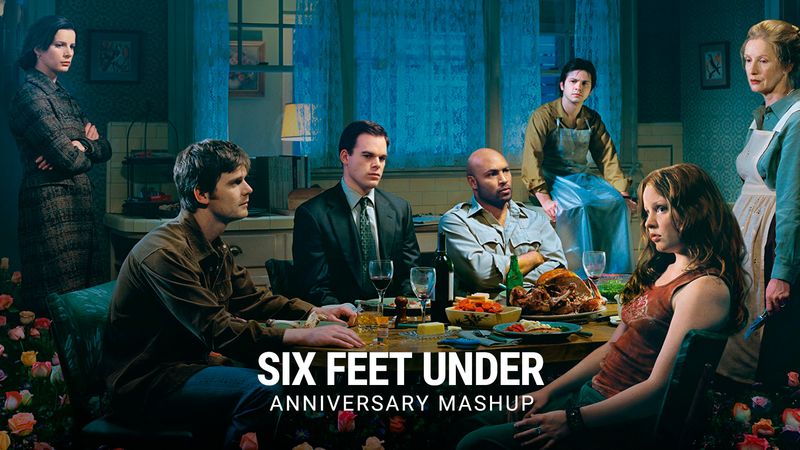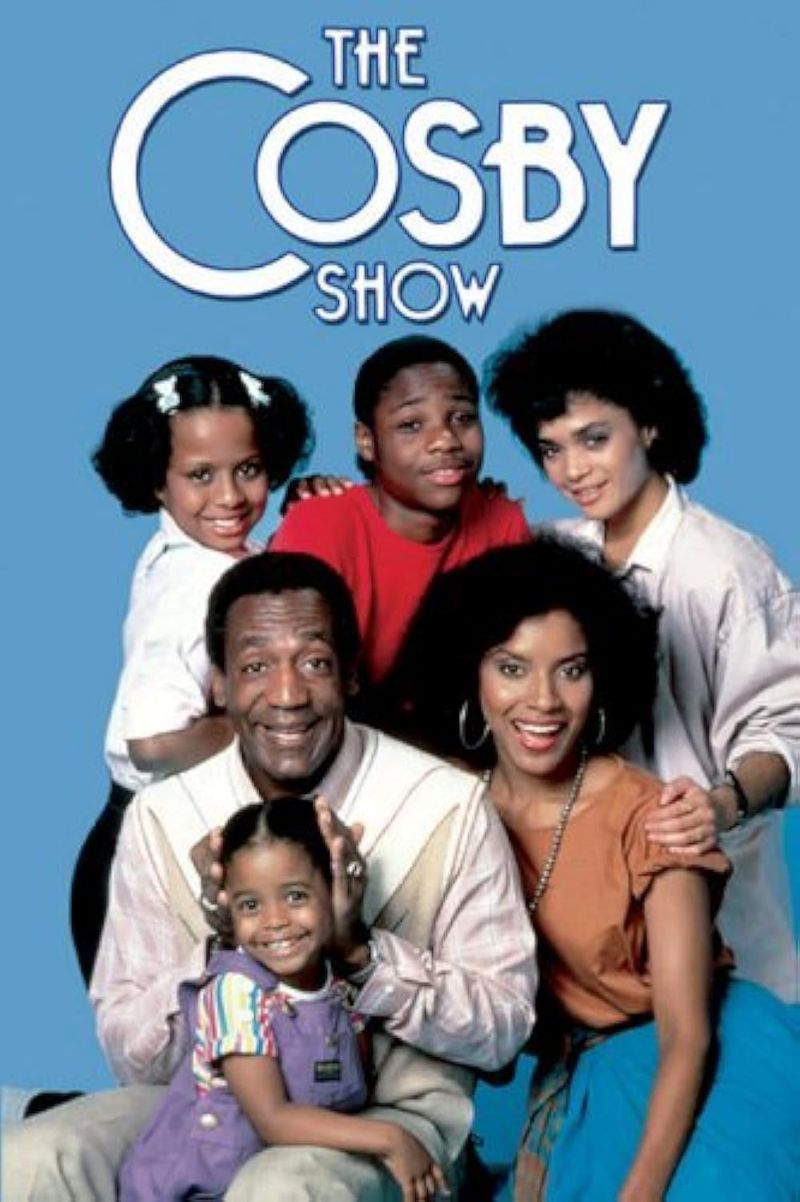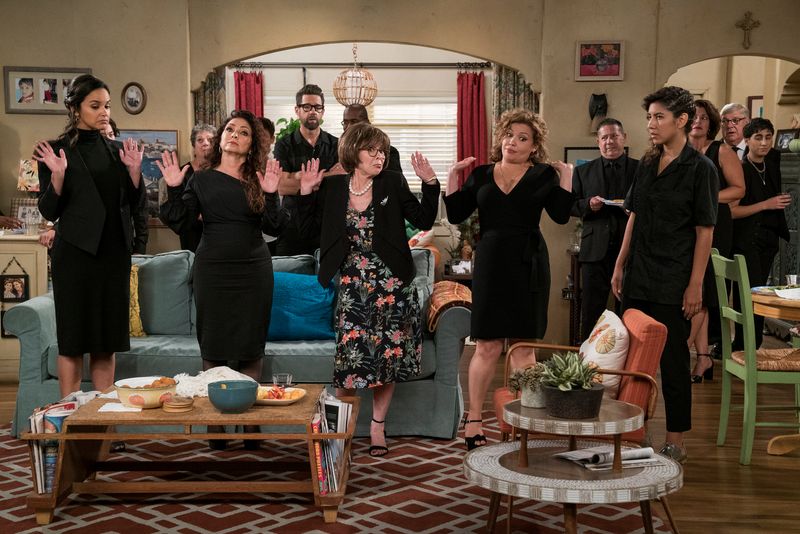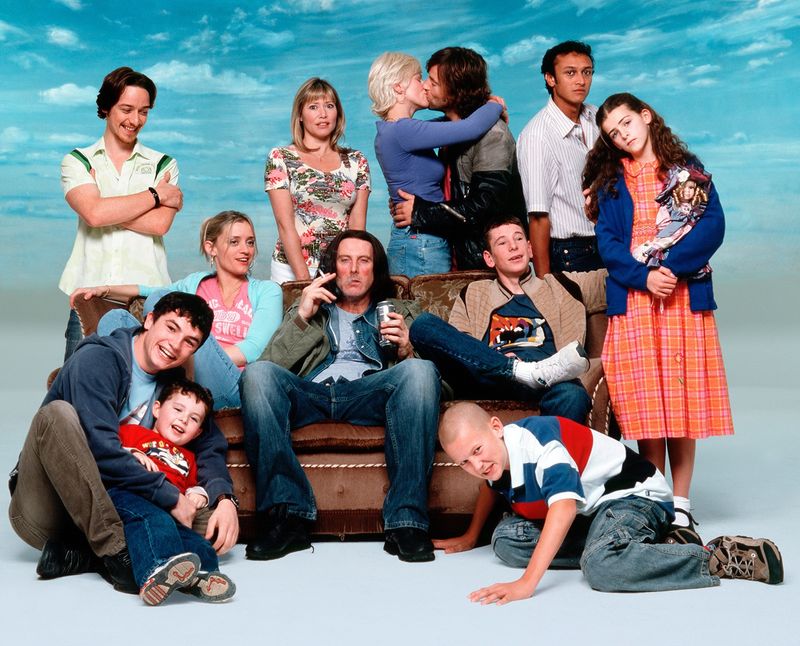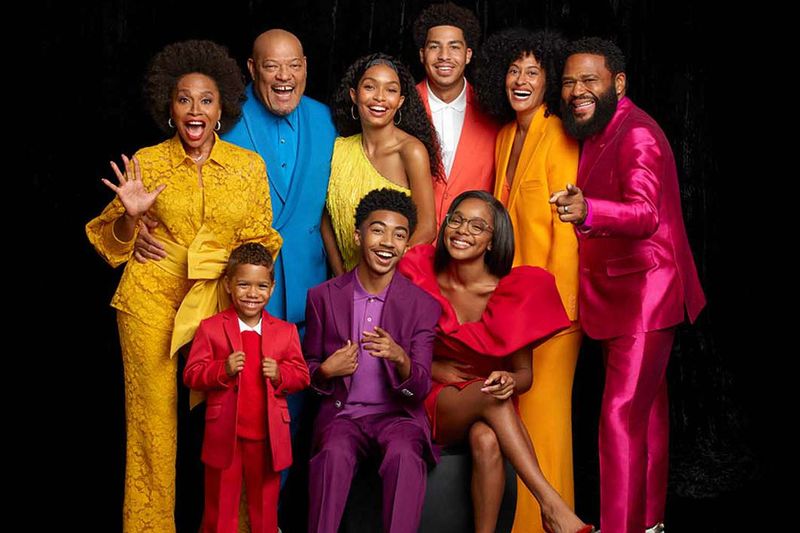Television has a magical way of bringing fictional families into our living rooms that somehow feel like real neighbors or relatives. These on-screen households mirror our own family dynamics, struggles, and triumphs in ways that make us laugh, cry, and nod in recognition. From dinner table debates to holiday chaos to those special moments that bring everyone together, these TV families have become part of our extended family through the years.
1. The Pearsons (This Is Us)
Through their time-jumping narrative, the Pearsons showed us that family stories don’t unfold in a straight line. Their multi-generational saga of adoption, addiction, racial identity, and grief touched viewers who saw pieces of their own family history reflected back.
Remember how Jack and Rebecca’s parenting choices echoed through their children’s adult lives? The show masterfully depicted how childhood experiences shape us forever.
The Big Three’s sibling relationship—with its rivalries, inside jokes, and unbreakable bond—mirrored real-life brother-sister dynamics. Most powerfully, the Pearsons demonstrated how families continue to heal and grow even after devastating loss, finding new traditions while honoring those who are gone.
2. The Pritchetts and Dunphys (Modern Family)
Blended, chaotic, and undeniably loving, the extended Pritchett-Dunphy clan captured the beautiful mess of contemporary family life. Their holiday disasters, vacation mishaps, and parenting struggles resonated with viewers because they felt so authentic.
Who hasn’t cringed at Phil’s dad jokes or related to Claire’s desperate attempts to keep everything under control? The show brilliantly portrayed how families evolve, with grandparents, stepparents, and adopted children creating new dynamics.
What made this family special was how they navigated cultural differences, generational gaps, and personal growth while maintaining their connections. Their group hugs at the end of difficult days reminded us that family, in all its imperfect glory, remains our strongest support system.
3. The Simpsons (The Simpsons)
Yellow skin and animated antics aside, the Simpson family has endured for decades because they’re surprisingly true-to-life. Homer’s workplace frustrations, Marge’s thankless household management, and Bart’s school troubles mirror everyday American family experiences.
Lisa’s role as the overlooked middle child and Maggie’s silent observations add authentic family dynamics that transcend their cartoon world. Their modest home in Springfield could easily be a house in any middle-class neighborhood across the country.
Despite their dysfunction and Homer’s frequent “D’oh!” moments, the Simpsons consistently choose each other when it matters. Their holiday episodes particularly capture the chaos, traditions, and unexpected tenderness that define real family gatherings—proving animated families can feel just as authentic as live-action ones.
4. The Hecks (The Middle)
Minivans with doors that don’t match, forgotten school projects, and mismatched socks—the Heck family’s middle-class struggles in Indiana hit home for families just trying to get through the week. Their perpetually broken appliances and financial juggling acts reflected reality for many American households.
Sue’s eternal optimism despite constant setbacks, Axl’s teenage self-absorption, and Brick’s quirky whispered repetitions created a family of distinct personalities navigating ordinary life together. Parents Frankie and Mike’s exhausted but determined parenting showed the unglamorous side of raising kids.
What made the Hecks so relatable was their acceptance that perfection wasn’t possible or even necessary. Their messy house, forgotten birthdays, and last-minute solutions mirrored real family life without the Hollywood gloss.
5. The Bravermans (Parenthood)
Four adult siblings, their parents, and their children created the sprawling Braverman clan that showed how extended families navigate each other’s lives. Their noisy family dinners in Zeek and Camille’s backyard felt like reunions many viewers recognized from their own experiences.
The show tackled real issues like autism spectrum disorder, adoption, cancer, and marital struggles with nuance. Adam and Kristina’s journey with their son Max’s Asperger’s diagnosis especially resonated with families facing similar challenges.
What made the Bravermans feel authentic was their messy involvement in each other’s business—offering unwanted advice, stepping on toes, but ultimately showing up when needed. Their baseball games, holiday gatherings, and impromptu dance parties captured the beautiful chaos of a tight-knit family across generations.
6. The Conners (Roseanne/The Conners)
The Conner family brought working-class reality to television with their financial struggles, factory jobs, and modest Illinois home. Their kitchen table conversations about bills, layoffs, and making ends meet reflected experiences rarely seen in glossier family sitcoms.
Roseanne and Dan’s parenting style—loving but practical, with plenty of sarcasm—struck a chord with families who couldn’t afford to helicopter parent. Their children’s journeys through teen pregnancy, career disappointments, and relationship troubles unfolded without easy solutions.
What made this family especially relatable was their use of humor as a coping mechanism. Whether facing health scares, unemployment, or family disagreements, the Conners’ ability to laugh through hardship while still acknowledging pain mirrored how many real families navigate tough times together.
7. The Taylors (Friday Night Lights)
Coach Eric Taylor and guidance counselor Tami Taylor modeled a marriage and parenting style that felt authentically supportive without being perfect. Their kitchen conversations after long days—Eric with his team, Tami with troubled students—showed the reality of balancing careers and family.
The Taylors’ relationship with daughter Julie captured the push-pull of raising a teenager: maintaining boundaries while allowing independence. Their temporary parenting of troubled quarterback Matt Saracen demonstrated how some families expand beyond blood relationships.
What made the Taylors feel like neighbors was their commitment to their small Texas community. Their open-door policy for players needing guidance, their career sacrifices for each other, and their imperfect but honest communication created a family portrait that was aspirational yet attainable—proving you don’t need a large cast to create a family that feels like home.
8. The Fishers (Six Feet Under)
Running a funeral home might seem like an unusual setting for a relatable family, but the Fishers’ complicated dynamics resonated deeply with viewers. Their business forced them to confront mortality daily while navigating their own very human struggles with intimacy, identity, and purpose.
Siblings David, Nate, and Claire’s relationships evolved with realistic friction and support as they processed their father’s death and their own life choices. Their mother Ruth’s journey from repressed housewife to a woman discovering her own needs mirrored many midlife transformations.
The family’s uncomfortable Sunday dinners captured the tension of adult children returning to the nest with their own baggage. What made the Fishers extraordinary was how their proximity to death heightened their appreciation for life’s messy connections—reflecting how our own family relationships gain meaning against the backdrop of limited time.
9. The Huxtables (The Cosby Show)
Despite later controversies surrounding Bill Cosby, the Huxtable family itself remains a groundbreaking portrayal of an upper-middle-class Black family that changed television forever. Their Brooklyn brownstone hosted relatable family moments that transcended race while celebrating Black culture and achievement.
Cliff and Clair’s parenting balanced professional careers with active involvement in their five children’s lives. Their approach to discipline—using humor and natural consequences rather than harsh punishment—influenced a generation of parents watching at home.
The siblings’ relationships captured authentic birth-order dynamics, from responsible Sondra to baby of the family Rudy. What made the Huxtables feel like neighbors was their ordinary family moments: homework struggles, curfew negotiations, and those legendary dance scenes that reminded viewers how joy and silliness are essential ingredients in healthy family life.
10. The Alvarezes (One Day at a Time)
The reboot of this classic sitcom brought a Cuban-American family to screens with multi-generational authenticity. Single mom Penelope juggling nursing work, veterans’ PTSD, and raising two teenagers without their father present reflected realities for many families.
Grandmother Lydia’s traditional values sometimes clashed with her daughter’s more modern approach, capturing the cultural evolution that happens within immigrant families. Elena’s coming out story and Alex’s navigation of Latino masculinity addressed contemporary issues with heart.
What made the Alvarezes feel like neighbors was their small apartment setting where privacy was limited and family members had no choice but to work through conflicts. Their conversations about money, mental health, and cultural identity were refreshingly honest, showing how families can preserve traditions while embracing change and supporting each member’s authentic self.
11. The Gallaghers (Shameless)
On the grittier side of family portrayal, the Gallaghers showed how siblings band together when parents fail them. Eldest daughter Fiona’s sacrifice of her own youth to raise her five siblings resonated with anyone who’s had to grow up too fast due to family circumstances.
Their South Side Chicago home became a fortress against external threats—eviction, social services separation, neighborhood violence—while also being ground zero for internal chaos. Frank’s addiction and Monica’s mental illness created a realistic portrait of how children adapt to unreliable parents.
What made the Gallaghers feel authentic despite their extreme situations was their fierce loyalty. When outsiders threatened one Gallagher, they faced them all. Their resourcefulness in creating makeshift holidays, solving problems outside legal channels, and finding moments of joy amid hardship showed how family bonds can be strongest when forged through shared adversity.
12. The Johnsons (black-ish)
The upper-middle-class Johnson family navigated the complexities of maintaining cultural identity while achieving the American dream. Parents Dre and Rainbow’s efforts to raise children who understood their Black heritage while living in a predominantly white neighborhood reflected challenges many families face in our multicultural society.
Their four children—from teenager Zoey’s independence to twins Jack and Diane’s different personalities to youngest son Junior’s earnestness—created a realistic sibling dynamic. Grandparents Ruby and Pops added generational perspectives that often conflicted with Dre and Bow’s modern parenting.
What made the Johnsons feel like neighbors was their dinner table conversations about race, privilege, and identity, showing how families function as the first place where children process complex social issues. Their holiday traditions, career challenges, and marriage ups and downs portrayed a successful Black family with universal relatability.

